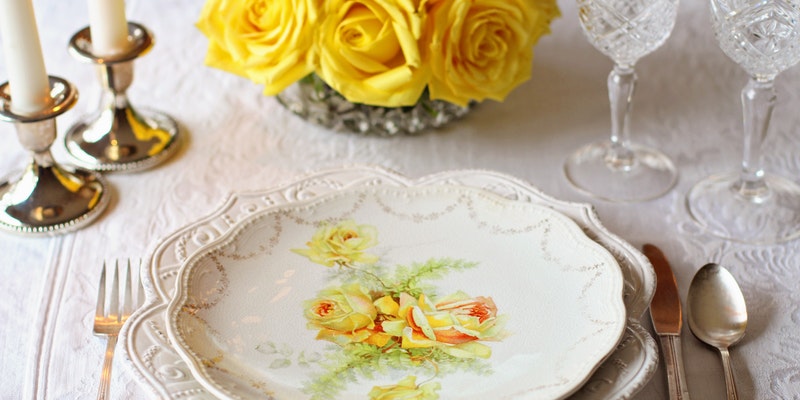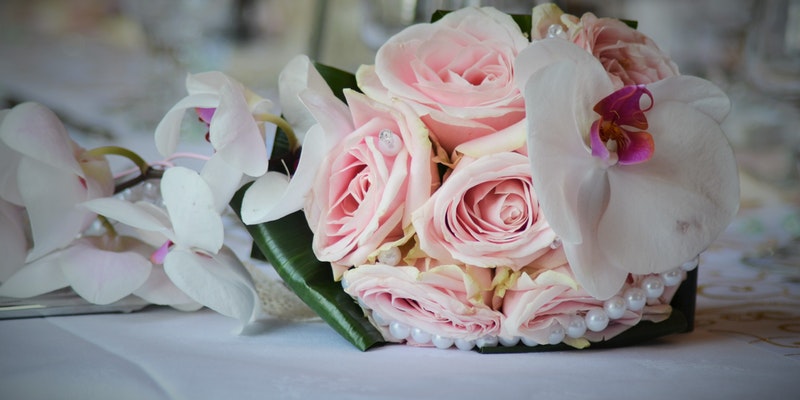- It is the Bride’s personal choice how to enter the church: her father, son, daughter, best friend, etc. can bring her in – or – she can just walk in all by herself.
- There is no need for a huge bridal party – a best friend, sister, or one of the children, of all of them can be part of the bridal party – it applies to the Groom as well – only a best friend, brother or the children as well. This is optional and private taste.
- There is no bridal shower or bachelors for the couple – if necessary, the bride can have a special tea with her friends and family.
- The church don’t have to be decorated like your first wedding – a nice bouquet in the foyer and in front of the church is enough.
- A pamphlet with the program of the service is always a good idea.
- It is a good idea to keep the children of both parties involved with special tasks during the ceremony: to give the rings, dispatch the confetti, or singing, or playing an instrument, etc.
- The children of both parties can also lit candles during the commitment or register to symbolize the unity of two families.
- Keep the atmosphere light, happy and vibrant – it is wonderful to get a second chance on happiness and love.
Second Weddings
Second Weddings: Reception
- The second wedding is always smaller, more intimate and more informal than your first wedding.
- Traditionally the Groom pays for the wedding, if not decided otherwise.
- A private garden, restaurant, or smaller venue is perfect for a second wedding.
- Only nearest friends and family are invited – please remember to keep both parties children involved with special tasks during the wedding.
- It is the couple’s personal choice of morning, afternoon or evening wedding.
- The Bride and Groom is the host and hostess of the wedding and greet the guests at the door of the venue – the groom stand in front of the bride and she on his left-hand side.
- The couple don’t have to sit at their own table, but can sit with all the guests at one long table.
- If there are too many guests, the couple can sit with nearest family.
- If there are friends that you couldn’t invite to the wedding – invite them afterwards at your new house for a nice braai of meal.
- No toasts are necessary – the Groom does all the talking himself. His speech can respect the past and must focus on the future.
Second Weddings: What to wear
The choice of your garment depends on your
- Age,
- The type of wedding you are planning; formal or informal.
- Figure-type, hair colour, skin complexion.
- Season : Winter, Spring, Summer or Autumn.
- Time of the wedding: Morning, Afternoon or Evening.
Morning and Spring/Summer weddings:
- Pastel colours in soft fabric, e.g. chiffon and it don’t have to be plain fabric, but soft floral motives can be very flattering.
- A long dress, and midi-length dress is suitable for morning weddings.
- Accessories must not be heavy or too big – keep it plain, sensitive and careful for a morning wedding.
- No veil – a fresh flower, tiara or hat will be more suitable.
- Remember to leave your previous wedding ring at home!
- Makeup must not be too heavy – keep it fresh, and certainly not overdone!
Afternoon and Winter/Autumn weddings:
- Darker colours with heavier fabric e.g. brocade, georgette, velvet and richer colours: royal, burgundy, navy, olive green, grey.
- A-symmetric lines are always very flattering in a dress or pant suit.
- You can consider beige, winter white or pearl colours – only if it suits you!
- You don’t have to wear a veil – a fresh flower, tiara or hat will be more suitable.
- Makeup can be heavier, but the guests must still recognize you.
- Darker cutex is better and remember to prepare your hands three months before the wedding to look good.
- Don’t forget the groom – his tie, suit, shirt must coordinate with your outfit.



